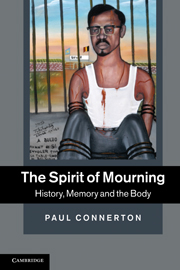Book contents
7 - Bodily projection
Published online by Cambridge University Press: 05 June 2012
Summary
By speaking of bodily projection I mean to refer to the fact that buildings around us and other features of our habitat are not regarded as entirely external to and wholly separate from us, but that the body-subject ‘reads’ features of the human body onto the habitat around us and within which we conduct our lives. This reading, or projection, can be accomplished in a number of different ways. It might be done by projecting onto the features of the habitat aspects of human bodily states. It might be done by projecting onto features of the habitat particular bodily attributes. Or it might be done by projecting bodily features in a form of cognitive mapping onto elements of nature.
I shall speak of these three types of projection as, respectively, empathic, mimetic and cosmic. All of these different types of reading or projection entail different modes of emotional or affective memory being applied to the habitat.
- Type
- Chapter
- Information
- The Spirit of MourningHistory, Memory and the Body, pp. 147 - 172Publisher: Cambridge University PressPrint publication year: 2011



